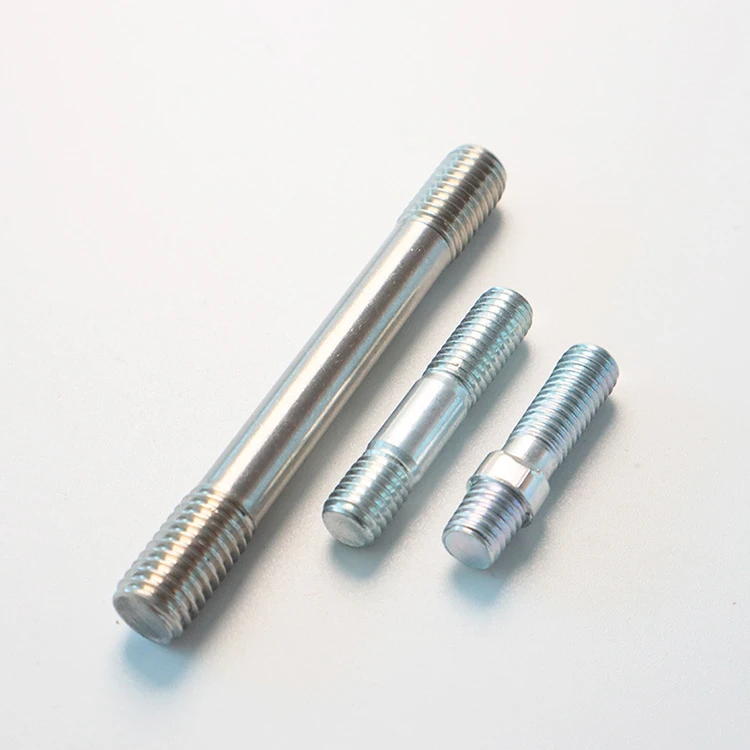Double end stud bolts, often referred to simply as “stud bolts,” play a vital role in various engineering and construction applications. These bolts are characterized by their threaded ends and unthreaded shank, making them ideal for securing flanges, mechanical joints, and other critical components. In this article, we will delve into the design, applications, and benefits of double end stud bolts, highlighting their importance in modern engineering.
Design and Structure
A double end stud bolt is essentially a rod with threads on both ends, separated by a plain shank in the middle. The threads are usually of equal length and diameter, although variations exist to cater to specific requirements. The unthreaded portion provides a bearing surface that prevents excessive stress on the threads, thereby enhancing the bolt’s overall strength and durability.

Materials and Coatings
Double end stud bolts are manufactured from a variety of materials, depending on the intended application. Common materials include carbon steel, alloy steel, stainless steel, and high-temperature alloys. These materials are chosen for their mechanical properties and resistance to environmental factors such as corrosion and extreme temperatures.
To further improve performance, stud bolts are often coated or treated with protective layers. Common coatings include zinc plating, galvanization, and fluoropolymer coatings, each providing unique benefits like corrosion resistance, reduced friction, and improved wear resistance.
Applications
Double end stud bolts are utilized across a wide range of industries due to their versatile design and robust performance. Some of the primary applications include:
- Petrochemical and Oil & Gas Industry: These bolts are extensively used in pipelines, refineries, and offshore platforms, where they secure flanges and connect pressure vessels and valves.
- Power Generation: In power plants, double end stud bolts are critical for assembling turbines, boilers, and other high-stress equipment that operates under extreme conditions.
- Automotive and Aerospace: The precision and strength of stud bolts make them suitable for use in engines, transmissions, and other critical assemblies that require reliable fastening solutions.
- Construction and Infrastructure: From bridges to high-rise buildings, double end stud bolts are used to secure structural components, ensuring stability and safety.
Benefits
The widespread use of double end stud bolts is attributed to several key benefits:
- Ease of Installation: The design allows for quick and straightforward installation, as one end can be secured into a tapped hole or nut while the other end is fastened with a nut.
- High Strength: Made from durable materials and designed to withstand significant stress, stud bolts offer exceptional tensile and shear strength.
- Versatility: Available in various sizes, materials, and coatings, double end stud bolts can be customized to meet the specific needs of different applications.
- Reliability: The uniform thread design and robust construction ensure a secure and reliable fastening solution, reducing the risk of failure in critical applications.
Conclusion
Double end stud bolts are indispensable in numerous industrial applications due to their strong, reliable, and versatile nature. By understanding their design, materials, applications, and benefits, engineers and technicians can make informed decisions when selecting fastening solutions for their projects. Whether in the petrochemical sector, power generation, automotive industry, or construction, double end stud bolts continue to be a cornerstone of modern engineering, ensuring the safety and integrity of complex assemblies.